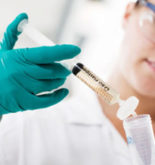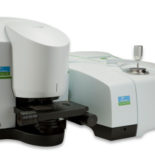An exciting new project from scientists at Columbia University in New York has suggested it may be possible to harvest energy from the natural process of evaporation on a huge scale. After first demonstrating that evaporation could power small electrical devices in 2015, Ozgur Sahin and his team have estimated that the combined force of American lakes and reservoirs could theoretically meet almost 70% of national power consumption.
As well as being a clean, renewable source of energy, evaporation would not involve the damaging emissions from mining and other traditional forms of energy. It would also have another significant advantage over its solar, wind and wave counterparts: intermittency. With evaporation taking place at a steady rate throughout the day and night, it would not be plagued by intermittency issues which make other forms of renewable energy so unreliable.
The “Evaporation Engine” and “Moisture Mill”
In a 2015 study, Sahin and his colleagues demonstrated how the expansion and contraction of bacterial spores in relation to fluctuating levels of humidity could power small electronic devices. They named these twin inventions the “Evaporation Engine” and the “Moisture Mill”.
The Engine works by adhering the bacterial spores to a series of strips of plastic. When the spores are exposed to higher levels of humidity, they expand with substantial force, pulling the plastic with them. By alternating between high and low levels of humidity (by using shutters to allow and prevent exposure to water), the team essentially converted the plastic strips into something resembling a muscle, which could then be used to generate electricity.
Meanwhile, the Moisture Mill used the same basic principle but in the form of a mill. By covering the inner spokes of a wheel with the spores and exposing only one side of the wheel to humidity (in the form of wet paper), they were able to make the wheel turn as the spores on alternating sides expanded and contracted.
Expanding operations
Of course, these demonstrations have only taken place on a small scale up until now and will require much more development and planning if they are to be realised as a viable alternative to fossil fuels and other renewables. Investigating the idea’s potential, Sahin and his team put all of the information pertaining to every medium-sized body of water in the States (less than 100km in diameter) into a computer model and tried to obtain realistic results.
“We wanted to find out, how would the environmental conditions impose further limits? So, weather will affect evaporation rates, temperature, wind speed, how much sunlight is available at that particular location, the humidity of the air”, explained Sahin in an interview with Yale. “We put all those parameters into a model, something we actually built by using previous models developed by hydrologists…from there we calculated in a given location with given weather data, what would be the power you can get from a specific area-say, a square metre”.
From this, the team were able to calculate that US lakes and reservoirs could supply as much as 325GW of energy, which is not far from 70% of national consumption (in 2015). As such, innovative renewable energy solutions like this could be invaluable to curbing our carbon footprint and finding the next source of power for our homes, businesses and vehicles.
“Even a small fraction of this available potential, if it becomes realized, would still be significant”, said Sahin.



